Roots Journey Back to Montana
Historical novel research meets family history and hurt
I spent July melting from heat and watering my garden, with a resulting water bill to prove it. My deadlines were ongoing but the endless month finally passed and we found ourselves in August, packing a suitcase and my notebook for a research trip to Big Sky country. All of this in service to a novel yet to be written about my maternal grandmother, Ruth.
Ruth desperately wanted out of the wilds of Montana and into a big city where she could have a career, not just to whelp children and stir the gravy like her mother and sisters. She got it for a moment in college in Oregon, then had it snatched away a year later (“family duty”), and then fought for it again. What she got was good for a few years, until it came to marriage, social expectations, and family obligations. I don’t think she was ever really happy in her life except in those early years of freedom from family pressure. So I intend to give her what she didn’t have.
Happily ever after means something different to every person.
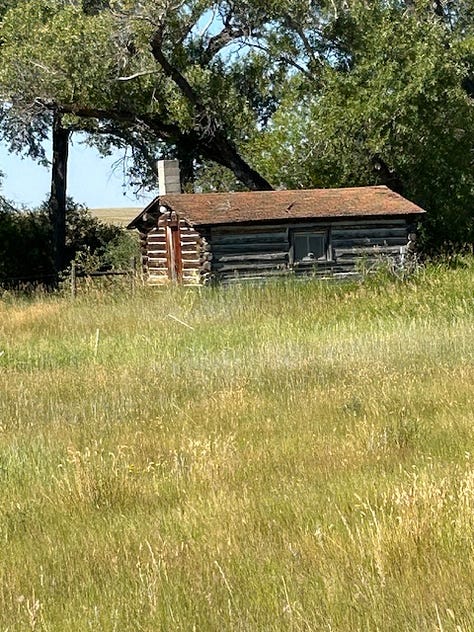

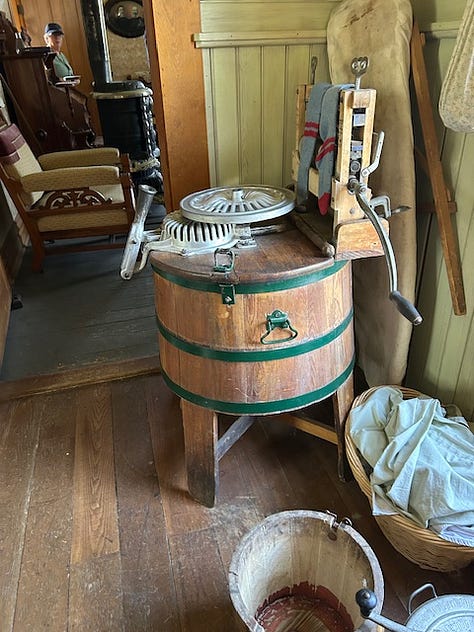
In Montana, we met cousins my mother hasn’t seen since 1947, and who of course I had never met. One incredible moment was the unfolding of a heritage quilt my third great-grandmother made by hand. See here the legacy of women’s artistry and legacy:
A label reads: “This quilt was made in 1891 in Illinois by Cornelia Hutton Manifold, for her nine-year-old granddaughter, Cornelia Catherine Bradshaw. The granddaughter, known as Kitty, married Charles E. Crum in September 1901, and they moved their family to a ranch in Big Timber, Montana, in January 1917, where they lived the rest of their lives. [The quilt] is now owned by their daughter, Mabel Catherine Crum Harper, who lives in Big Timber. It is in excellent condition and has won ribbons for [being] the oldest quilt when displayed in local quilt shows. [typed in] 1988.”
The quilt has now been passed to my second cousin, and I presume, down to her daughter, granddaughter, and great-grand daughter, until it falls to shreds, like the patriarchy1.
Another very moving moment was standing on a little rise behind the homestead’s house, a hill set aside as a cemetery for the first family there, where you (or Ruth) could stand in the ever-present prairie wind, with the little cemetery at your back, and the Crazy Mountains before you, and I cannot wait to write that scene into my novel.
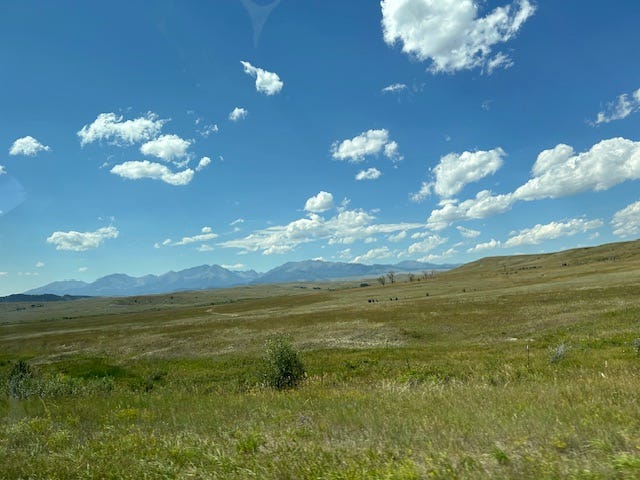

There was a one-room schoolhouse (where Ruth taught in that loathsome time), but it has been replaced by a three-room schoolhouse (delusions of grandeur here!). And we had some time to splash in the beautiful Sweetgrass Creek, where I collected some pretty rocks and a piece of broken pottery of uncertain age. The river is a stone’s throw behind the homestead house, a former log cabin that has been Frankensteined (or should I say Winchester Mystery Housed?) into a large and comfortable ranch house with no sign of its humble beginnings. But the bones are there. They are everywhere.

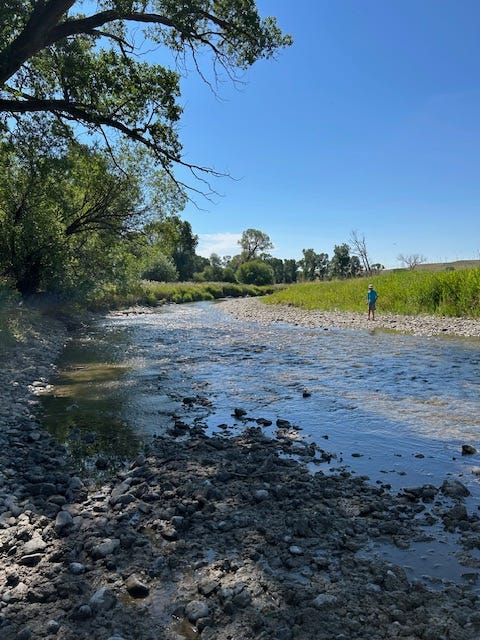
What if the piece of pottery I found was a bowl my grandmother had used to mix a cake or some biscuits? What if it was a bowl that her mother dropped and asked her daughter to throw on the scrap heap out by the creek? What if it was even older? I doubt this is so, but it is such things that spark my imaginings.
Ultimately, it doesn’t matter if my great-grandparents built the first log cabin (they didn’t) or broke the bowl (unlikely) or paid for the land with pretty beads (definitely not). I offered a land acknowledgement to the Crow and Métis people whose lands these were before the Homestead Act, before sheep and cattle and fracking took the place of the buffalo. I said hello to the bald eagle and the magpie, the pronghorn antelope and the cottontail who crossed my path, and thanked them for the delight of seeing them.
I watched the sky flame morning and night with the spinning earth, while smoke from Canada’s burning forests occluded the nebula I had hoped to see in the famed Big dark Sky. The last of the Perseids passed overhead, and a zillion invisible midges ate their way around the armholes of my shirt into my tender skin. We are tiny but mighty, both seemed to say.
So say I.
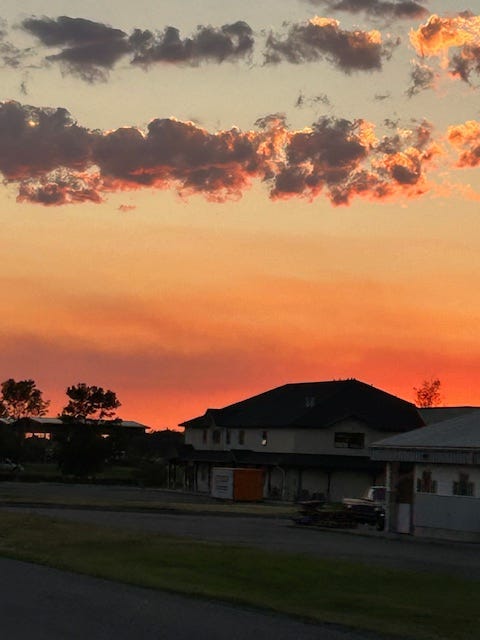

Why tell a story about someone who didn’t get what she wanted? Because she is all of us. My grandmother was thwarted at every turn. She couldn’t marry the man she loved, so she acquiesced to Mr. Second-Best, my grandfather, who had also lost his dear love. Second best, unhappy, dissatisfied, and determined to claw their way to respectable heights, they continued to thwart their children and repress their feelings, leaving a generational legacy of passive-aggressive smiles and sharp laughter, forehead wrinkles and heart problems.
Anyway, it’s fiction.
Who ever gets what they really wanted? I did, although it took me awhile to see it when I’d found it. I’m here now. I have time to tell this story.2 Sit back and wait for the words to fall. If the house of cards (society as we know it) doesn’t fall first.
Ruthless: Coming in Fall 2028 from Sibylline Press, knock on wood.
From my lips to God’s ears.
Ibid.



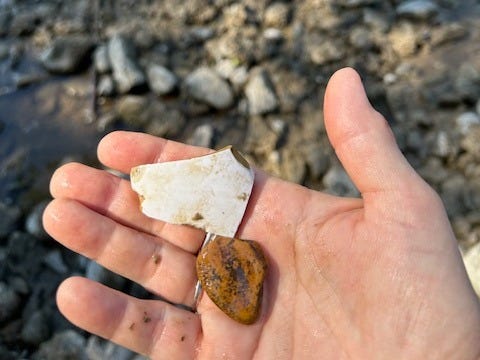

Lovely post, Julia! Your writing does so much work, but the photos are lovely as well. That quilt! The musings around the source of the shard of pottery! I so appreciate how you use your ancestors to inspire your fiction. .
Love all this Julia. I used to do this kind of research though for memoir for about 40 years as I tried to piece together the lives of the women in my family to try to understand what happened. Dusty courthouse libraries, cemeteries, broad landscapes of silence and wind. Looking forward to your new work!